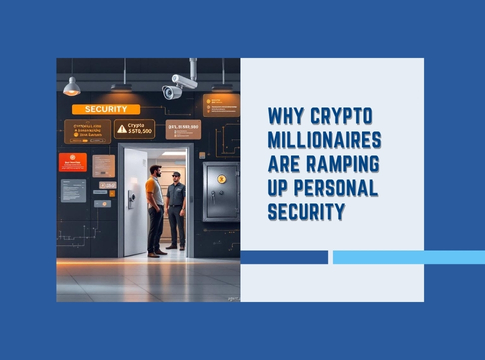As the value of cryptocurrencies continues to soar, so does the risk to those who have amassed significant wealth through digital assets. Crypto executives and investors are finding themselves increasingly targeted by criminals seeking to exploit their holdings. This emerging threat landscape is prompting many in the crypto elite to take proactive measures to safeguard their personal security.
Rising Threats to Crypto Executives
Recent incidents have underscored the escalating risks faced by individuals in the cryptocurrency sector. In France, for instance, three masked men attempted to abduct the daughter and granddaughter of the CEO of Paymium, a cryptocurrency company. Fortunately, the family was able to fend off the attackers with the help of neighbors. Such brazen attempts highlight the growing trend of violent abductions targeting crypto elites and their families.
The motivations behind these attacks are often financial. Criminals are increasingly aware that cryptocurrencies, particularly Bitcoin, offer a high return on investment with relatively low risk. Unlike traditional assets, digital currencies can be difficult to trace, making them an attractive target for ransom demands.
Increased Spending on Personal Security
In response to these threats, many crypto executives are significantly increasing their spending on personal security. Coinbase, a leading cryptocurrency exchange, reported spending $6.2 million on security measures for its CEO, Brian Armstrong, in a single year. This amount surpasses the combined security expenditures for the CEOs of major corporations such as JPMorgan, Goldman Sachs, and Nvidia.
Security experts are noting a surge in inquiries from crypto investors seeking long-term security solutions. Companies specializing in personal protection are reporting more proactive requests, indicating a shift in how crypto elites approach their safety.
The Role of Social Media in Heightening Risks
The proliferation of social media has inadvertently increased the vulnerability of crypto investors. Many individuals in the crypto space openly display their wealth and success online, which can attract unwanted attention. Criminals often monitor these platforms to identify potential targets.
Moreover, data breaches have exposed personal information, further compromising security. For example, a recent breach at Coinbase revealed customer data, raising concerns about the safety of personal information in the digital age.
The Shift from Digital to Physical Security Threats
Historically, the primary concern for crypto investors was digital security—protecting wallets and online accounts from hackers. However, the increasing frequency of physical threats, such as kidnappings and home invasions, is prompting a reevaluation of security strategies.
Experts suggest that the rise in physical attacks is partly due to the perceived ease with which criminals can access cryptocurrency holdings. Unlike traditional bank accounts, digital wallets can be accessed through physical coercion, making them a more attractive target for criminals.
Implementing Comprehensive Security Measures
To mitigate these risks, crypto executives are adopting a multifaceted approach to security. This includes not only investing in physical protection, such as hiring bodyguards and installing surveillance systems, but also enhancing digital security protocols.
Digital security measures involve using multi-signature wallets, enabling two-factor authentication, and conducting regular security audits. By implementing these strategies, individuals can create a layered defense that addresses both physical and digital threats.
The Future of Crypto Security
As the cryptocurrency market continues to mature, the security landscape is also evolving. The increasing convergence of digital and physical threats necessitates a holistic approach to security. Crypto elites must remain vigilant and proactive, continually assessing and adapting their security measures to address emerging risks.
The growing concern over personal safety among crypto executives serves as a stark reminder of the challenges that come with significant wealth in the digital age. While cryptocurrencies offer unprecedented opportunities, they also introduce new vulnerabilities that must be carefully managed.
In this dynamic environment, collaboration between the crypto community, security professionals, and law enforcement agencies will be crucial in developing effective strategies to protect individuals and assets. By fostering a culture of security awareness and preparedness, the crypto elite can better navigate the complexities of the digital and physical worlds.

